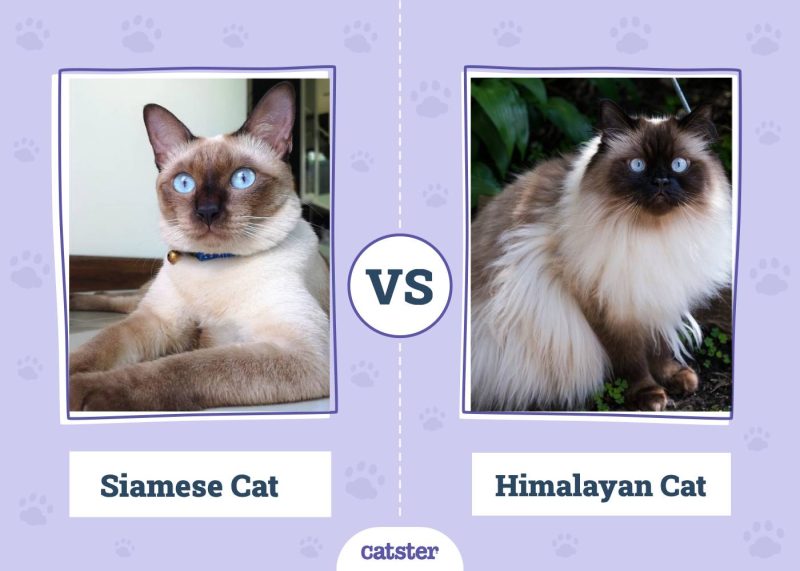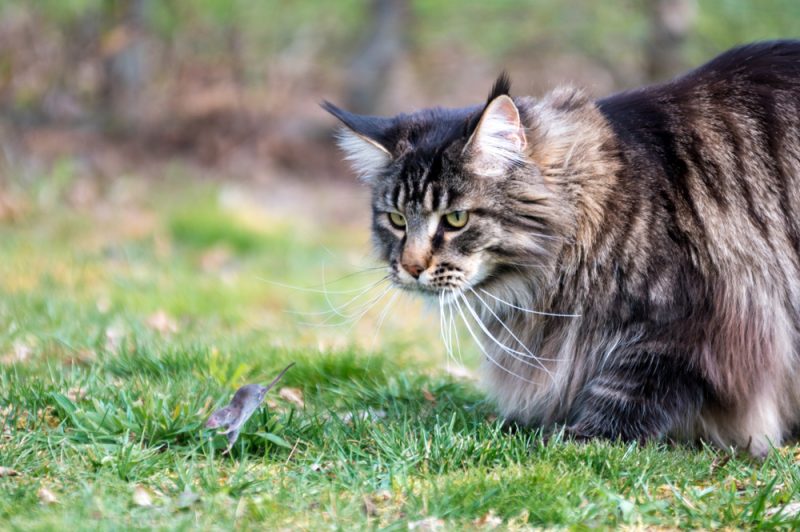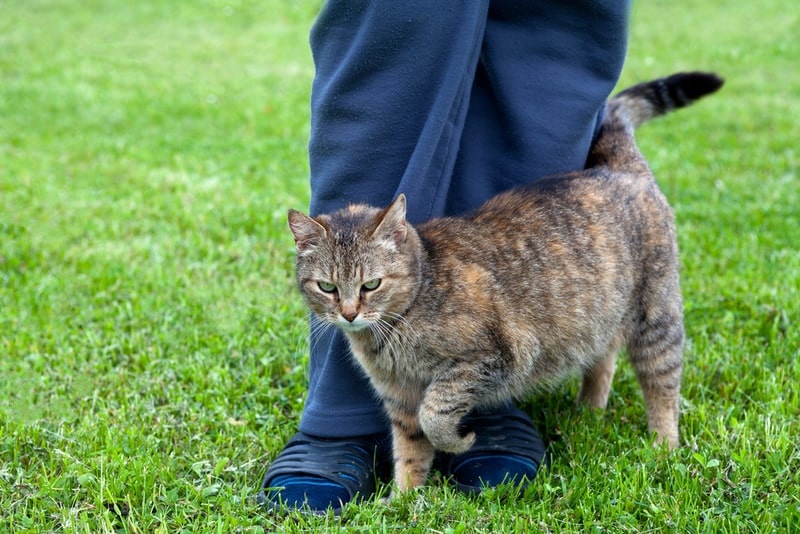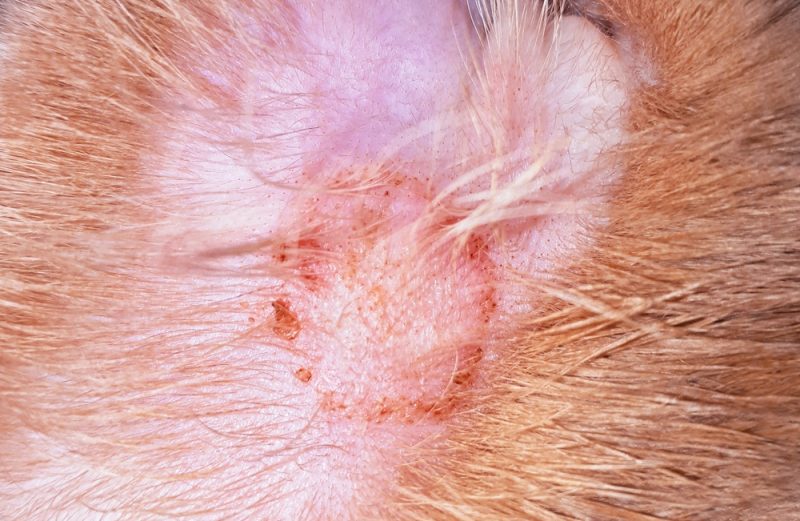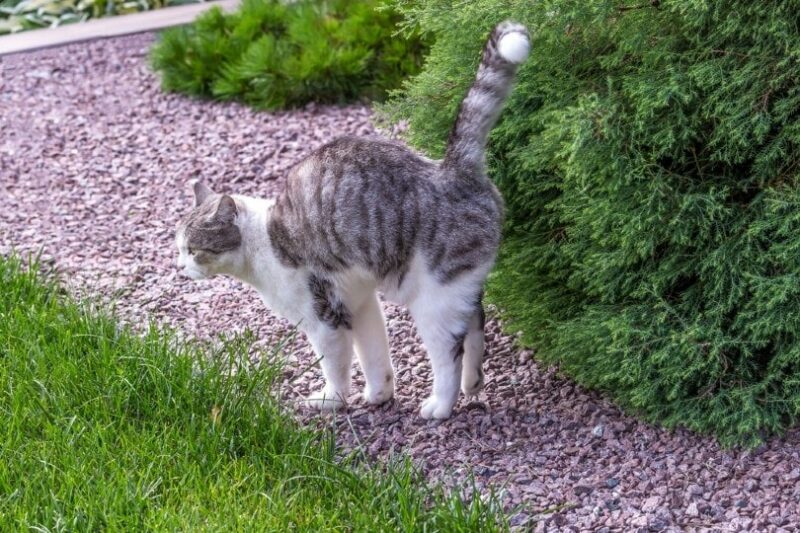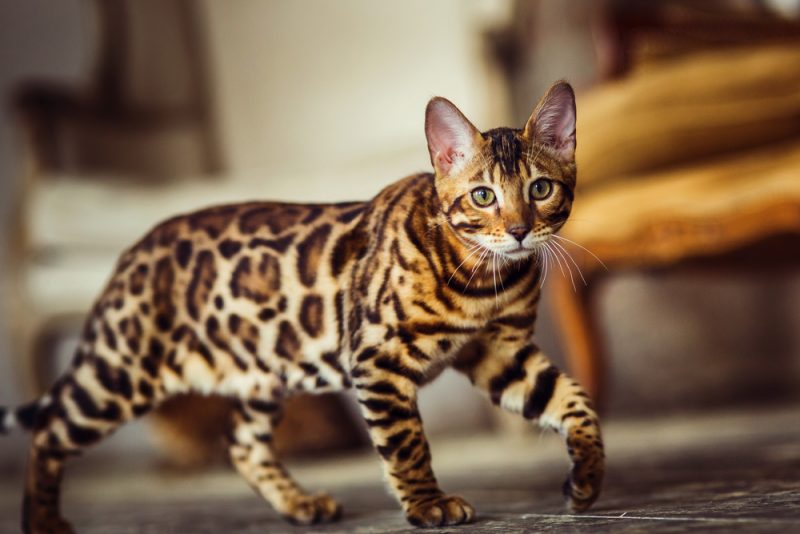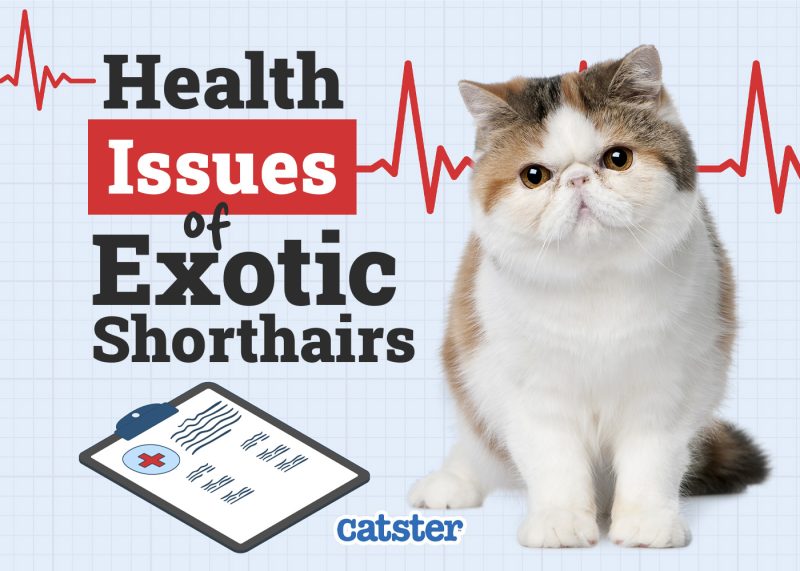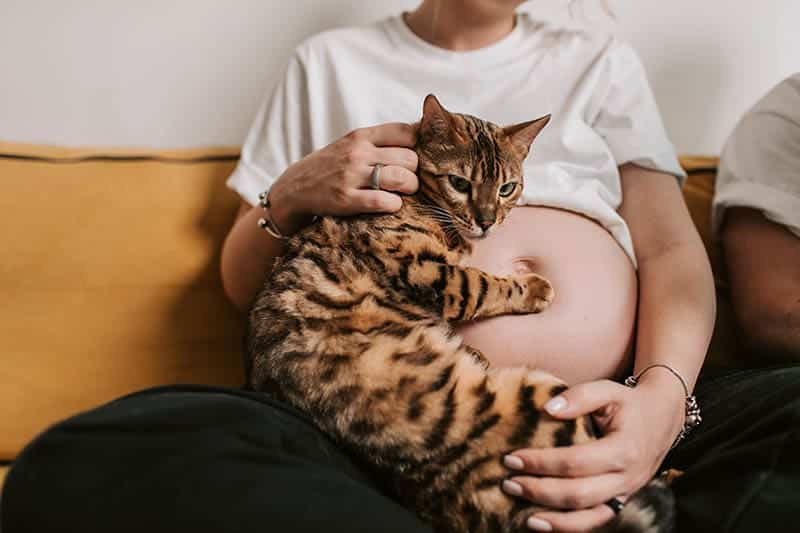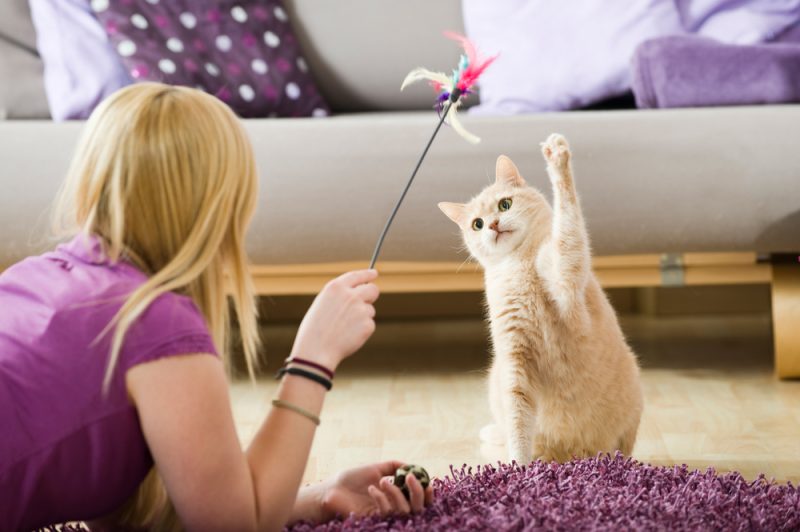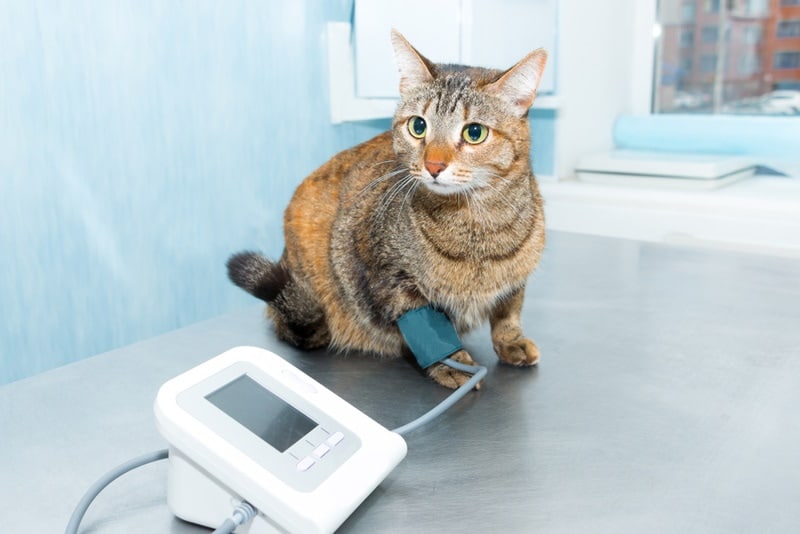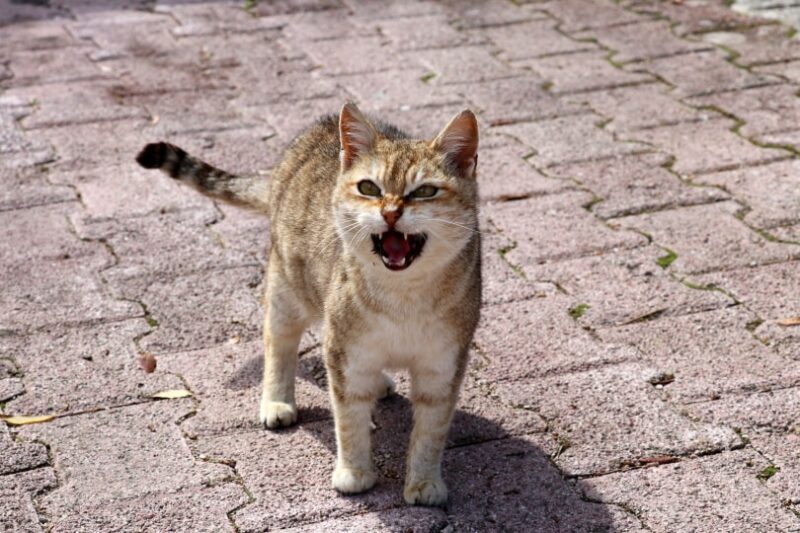In this article
View 3 More +Siamese and Himalayan cats are both lovable and beautiful animals, and in the United States, both are extremely popular pet breeds. Choosing between such charming options can prove to be challenging. There are significant differences between the coat lengths of the two breeds; Himalayans have longer and fluffier coats than Siamese Cats.
It turns out, however, that the variance between these two breeds goes a lot deeper than just their fur. Both are known for their high intelligence and loving personalities, but Siamese are loud and active, while Himalayan Cats are reserved and sedate.
Many people don’t realize that Himalayans were created from Siamese Cats, and this shared ancestry explains some of the striking similarities between the two breeds. Below, we’ll closely examine each breed and determine what makes each one unique. So, let’s find out which of these beautiful creatures is right for you!

Visual Differences
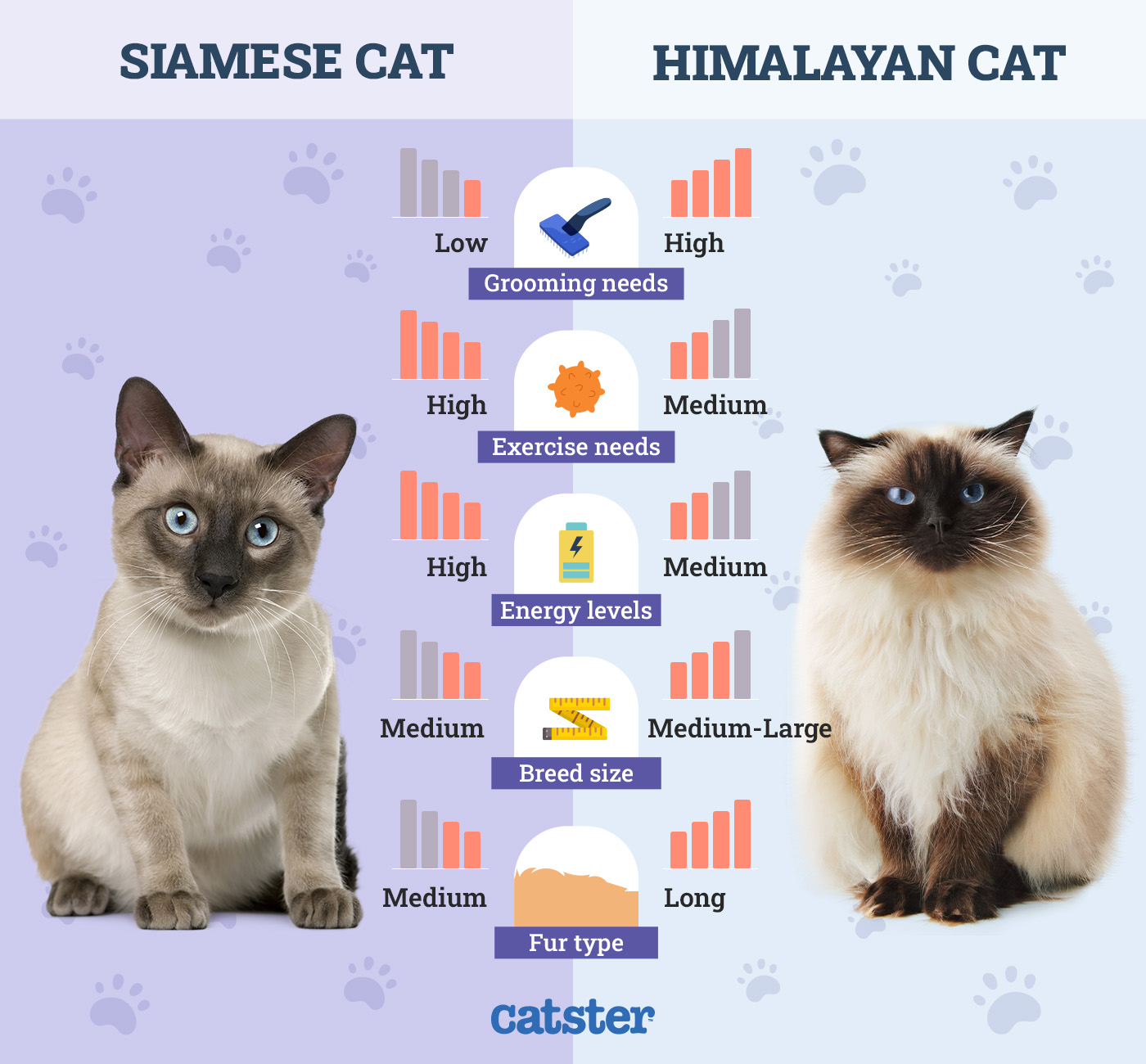
At a Glance
- Average height (adult): 8–11 inches
- Average weight (adult): 8–13 pounds
- Lifespan: 12–16 years
- Exercise needs: Average
- Grooming needs: Very low
- Family-friendly: Absolutely
- Other pet-friendly: Almost always
- Trainability: Highly intelligent and easily trained
- Average height (adult): 10–13 inches
- Average weight (adult): 7–13 pounds
- Lifespan: 9–16 years
- Exercise needs: Minimal
- Grooming needs: Considerable
- Family-friendly: Definitely
- Other pet-friendly: Yes
- Trainability: Playful, sociable, clever, and easily trained

Siamese Cat Breed Overview
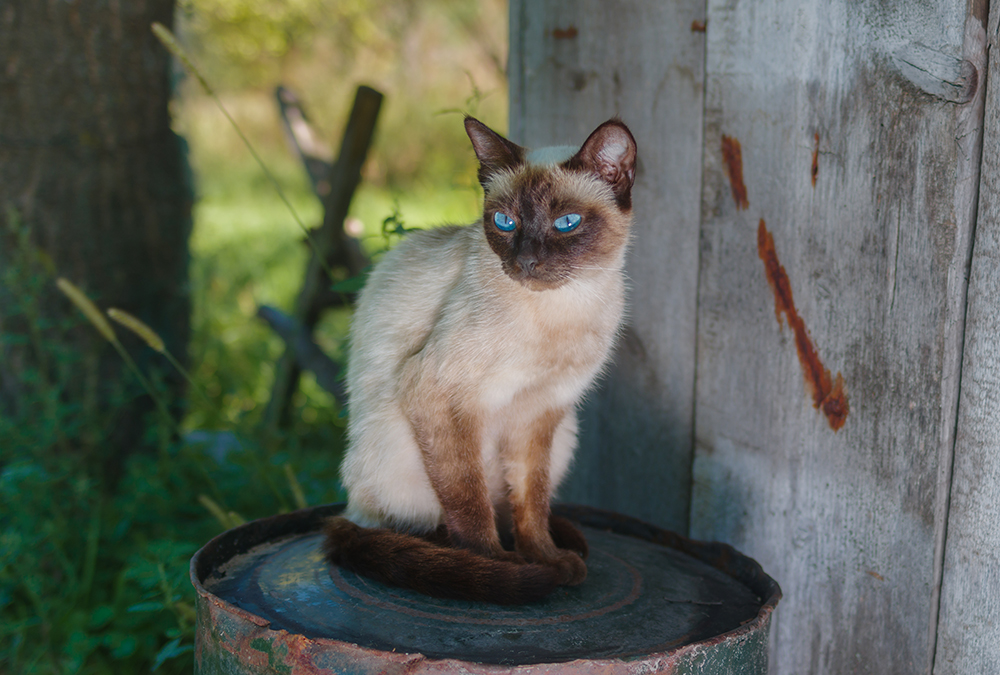
The graceful Siamese is a wonderful family pet and one of the most popular and recognizable cats in the world. Siamese Cats originated in the kingdom of Siam (now Thailand) and have been prized there for centuries, but they only made their way to the rest of the world in the late 19th century. These elegant felines are typically slender and muscular with long, lithe bodies.
At first, Siamese came only in seal-point colorations, but they now come in a variety of other shades. They have a distinctive color pattern that is easily recognizable. They are known for their unique markings, which can be light or dark, and their blue eyes.
They are generally light brown or cream-colored with darker points on their ears, face, legs, and tail. Some people say that Siamese look like they are wearing a cream tuxedo because of the dark shading around their faces and paws.
The combination of an unusual coat, stunning blue eyes, and outgoing personality make them incredibly popular. In fact, the Siamese has been used to develop several other breeds, including the Balinese, Birman, and, of course, the Himalayan.
Personality / Character
These good-looking kitties are cherished not just for their unique physical features but also for their sweet personalities. Several qualities make Siamese wonderful pets and lovable companions. Siamese Cats are typically known for their outgoing and chatty nature. They are also highly intelligent and can be quite demanding regarding attention.
Siamese typically have a strong spirit and are unafraid to stand up for themselves. They can be pretty independent but enjoy spending time with their human buddies. They prefer to be around people and follow their owners around the house. They can be playful and energetic but also enjoy naps in a sunny spot. Siamese Cats are very vocal and are known for their distinctive “meow”.

Training
Siamese Cats are known for their intelligence and ability to train easily. They can learn how to complete tasks on their own and may open doors and figure out how to get what they want all by themselves. They can also be taught to perform tricks and respond to commands. Siamese are also known for being vocal, and many people enjoy their talking abilities—it can feel as though you’re really conversing with a Siamese.
These cats are also known for being very easily litter-trained. They are naturally clean animals and prefer not to soil their environment. To help train your Siamese Cat, place the litter box in an easily accessible spot and put a small amount of litter in the box to start. When your cat uses the litter box, praise them and offer a treat.
Care
Siamese require very little grooming, and their short coats only need to be brushed occasionally to remove dead hairs and to keep their fur clean and free of mats. This occasional, minimal grooming helps prevent skin problems, distributes the natural oils in their coat, prevents their coats from getting dull, and prevents excess hair from ending up in your carpets and couches.
Siamese cats are known for being very clean animals, and they typically do not have a problem with hairballs or other types of debris buildup. However, their nails should be being clipped periodically.
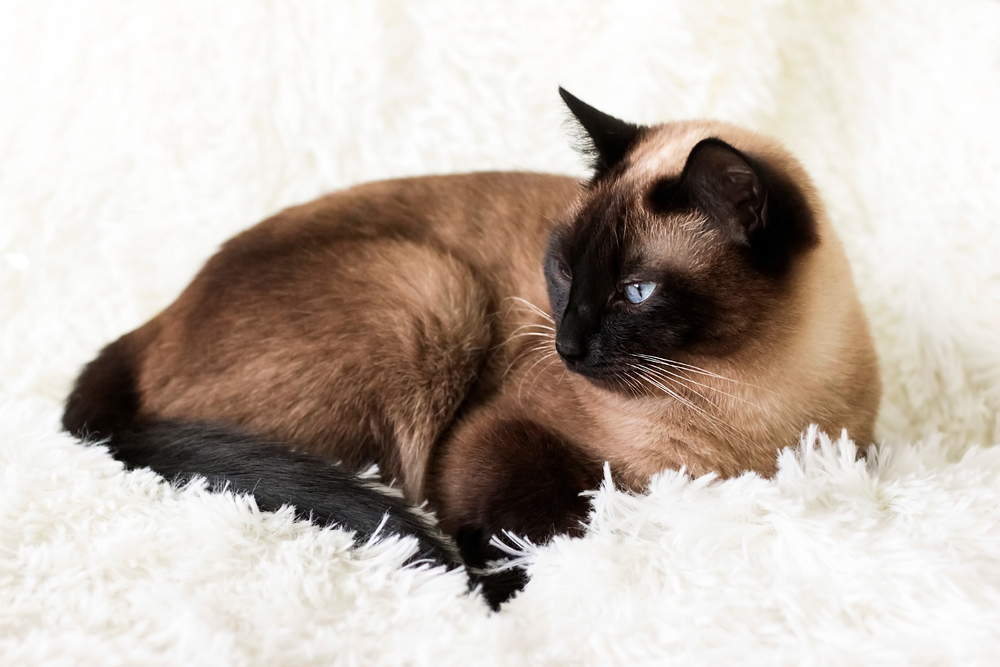
Health
Siamese Cats require a fair amount of care to maintain their health. There are a number of genetic health conditions that make the Siamese more prone to diseases than the Himalayans. Breed improvements have changed the physical shape of the Siamese over the generations. As a result of their pointed faces and wedge-shaped heads, their teeth don’t have enough space, so brushing is essential to keeping them healthy.
Siamese Cats can also be picky eaters, so make sure they get the nutrition they need by watching their diet. On the other hand, if they become overweight, their slender legs make them prone to limb problems, so they need good nutrition to stay healthy. Siamese should also be given regular vet checkups, and they should be vaccinated against common feline diseases.
Breeding
Breeders typically mate two top-quality Siamese to produce kittens with these desirable features. Breeders of Siamese typically maintain their markings and breed for other physical characteristics that are common to the breed, such as a long body shape and blue eyes. Siamese cats with particularly interesting markings or coloring may be bred with similar Siamese to produce offspring with the desired features.
Siamese Cats are sometimes crossed by breeders to create new strains of the breed, like the Himalayan. Siamese are relatively expensive compared to other cats, and Siamese kittens typically cost between $700 and $1,000. The high price tag is likely because they are one of the most popular breeds in the world.
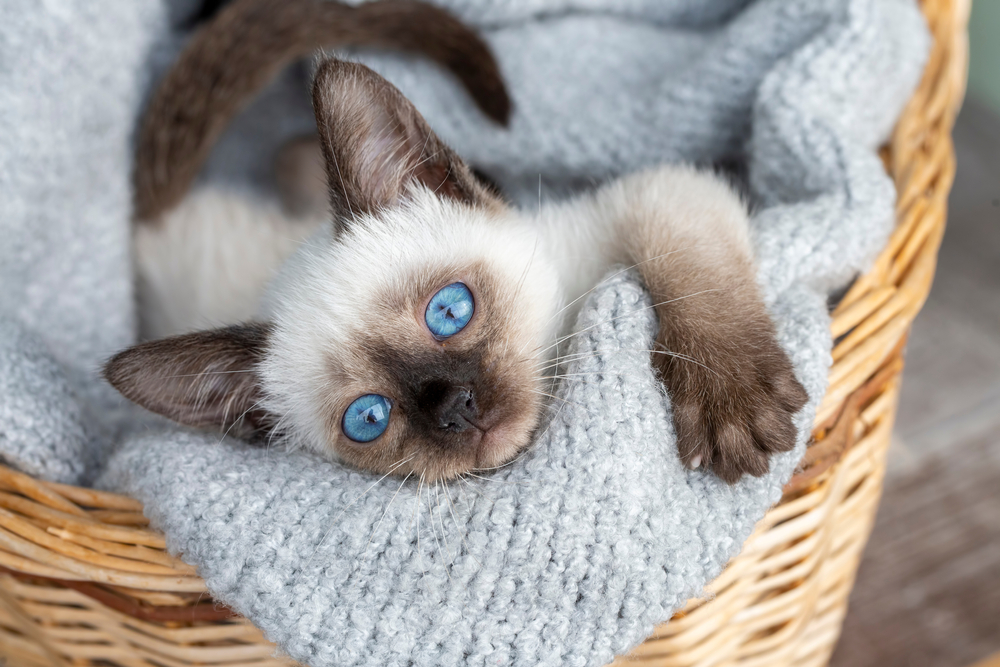
Suitable For
Siamese are ideal for people who lead active lifestyles. They are very playful and energetic, and they require a lot of attention and interaction. The spirited and athletic Siamese are eager to be around their families and are fantastic pets. Siamese are not recommended for people who cannot commit a lot of time to take care of their pets. They are attention-demanding and don’t enjoy being left alone, so they will be more vocal when you return.
Siamese cats are typically unsuitable for people who prefer quiet animals since they are one of the most vocal breeds of domestic cats. A Himalayan is likely a better choice if you’re looking for a quiet, docile cat that doesn’t require much attention. The Siamese is an excellent option if you want a fun, lively, and social cat.

Himalayan Cat Breed Overview
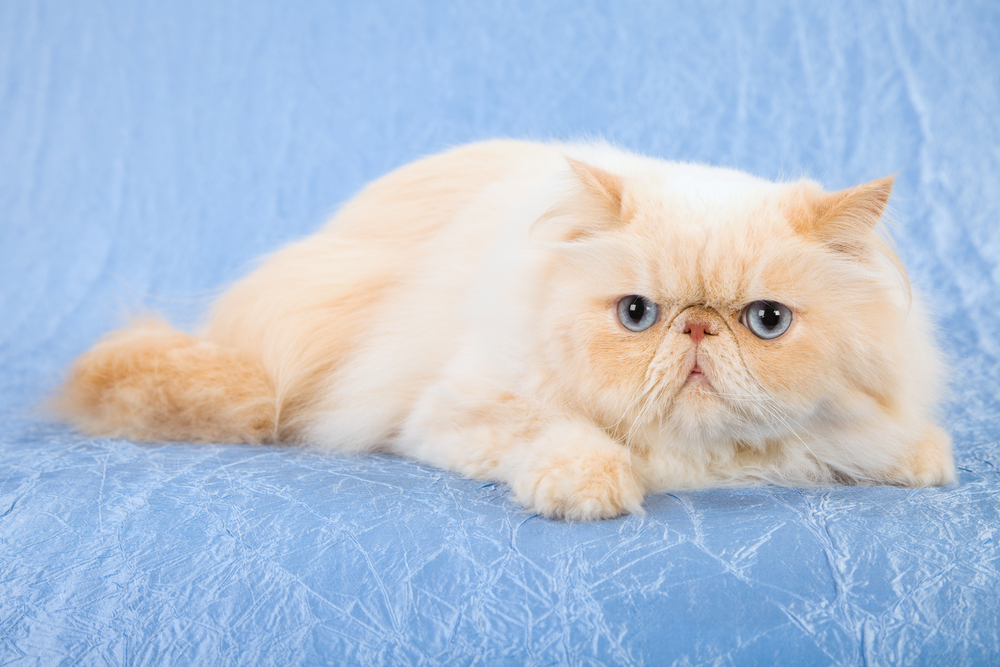
The Himalayan Cat is a cross between a Siamese and a Persian cat and was first developed in the early 1930s. In 1957, the Cat Fanciers Association recognized the Himalayan as a distinct breed but later reclassified it as a variety of Persian. According to some other registries, the Himalayan is a unique breed.
Himalayans are relatively large cats with the luxurious, dense coats of the Persians and the pointed markings and stunning eye color of the Siamese. Himalayans come in various colors, but all have the characteristic pointed pattern on their fur. They require regular grooming to prevent their long fur from becoming matted or tangled. They are gentle and friendly and get along with anyone.
Himalayans are sweet-tempered and easy to care for, making them popular for families with children. They are intelligent cats often sought after for their beauty and companionable nature. Though not as needy as the Siamese, the Himalayan is still a sociable, devoted cat, and they should be given plenty of attention and love.
Personality / Character
Himalayans are almost identical to Persians in terms of their character. Generally, Himalayans are companion animals rather than loners, so they like to be near their owners and tend to be calm, gentle, and relaxed. They are lap cats that like human interaction and attention, but they prefer to live in peaceful surroundings without too much commotion or stimulation.
In general, they are friendly creatures, but they tend to pay more attention to their preferred human, and they can be cautious with strangers. Although they prefer peace and quiet and like being gently petted on your lap, they are also capable of playing when the mood strikes.
Although they are more independent than Siamese, the Himalayan enjoys being around people, so they are perfect for households where someone is always home.
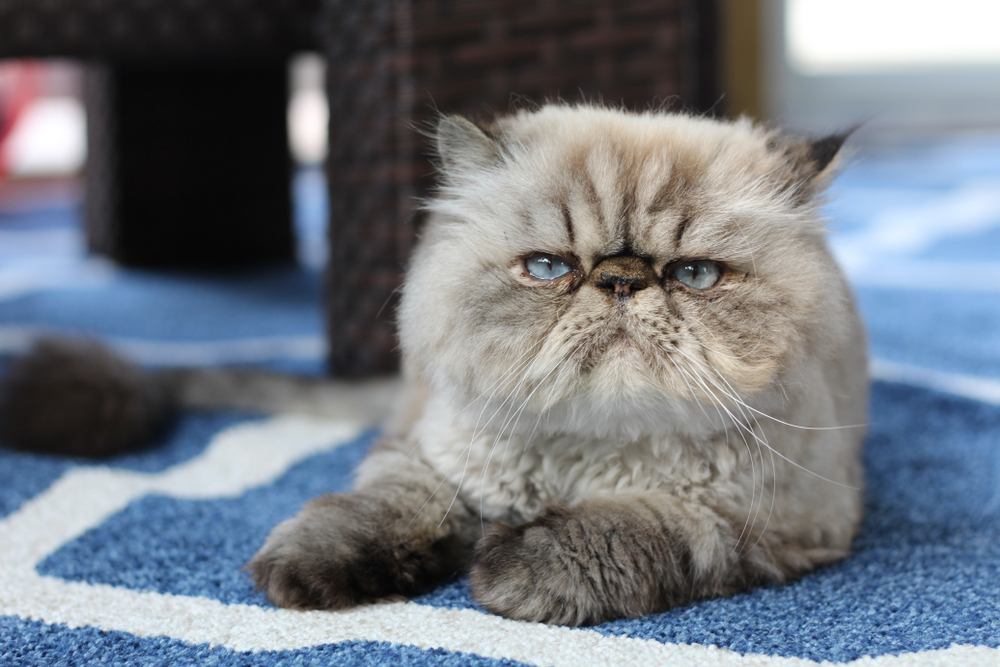
Training
People sometimes scoff at the idea of training a cat, but it is possible. The Himalayan is known for being very docile and friendly. They typically respond well to basic obedience training and can be taught to come, sit, stay, and even fetch. With a little patience and persistence, you can train a well-behaved Himalayan to respond to your commands.
Training a Himalayan Cat usually involves rewarding them with treats or positive reinforcement when they exhibit the desired behavior. It is essential to be consistent with training and to keep sessions short and fun for the cat.
Positive reinforcement training can include treats, petting, or verbal praise. Training can also be reinforced with a clicker, which makes a distinctive noise when pressed. When the cat does something you want them to do, press the clicker and give them a treat.
Care
Himalayan cats are bred for their long hair and require a great deal of care to keep their coats healthy and free from mats. As a result of their long, luxurious coats, Himalayans require daily grooming and brushing.
Siamese coats are short and never tangle, so a Siamese may be a better choice if you don’t have the time or aren’t willing to devote time to daily grooming. Generally, Himalayans love to be groomed, and it’s a great way to bond with them. They should be combed at least once a day to remove dirt or, more often, if they are allowed to roam outside.
Himalayans should also be brushed regularly to remove loose hair, especially if they’re shedding a lot. Bathing can also be beneficial, especially if the cat is prone to getting dirty. Their ears should also be checked regularly, as Himalayans are prone to ear infections.
The cat’s litter box should be scooped at least once a day, and the box should be changed completely every week. You may find it useful to trim the fur on your Himalayan’s hindquarters to keep it clear of fecal matter, urine, and litter.
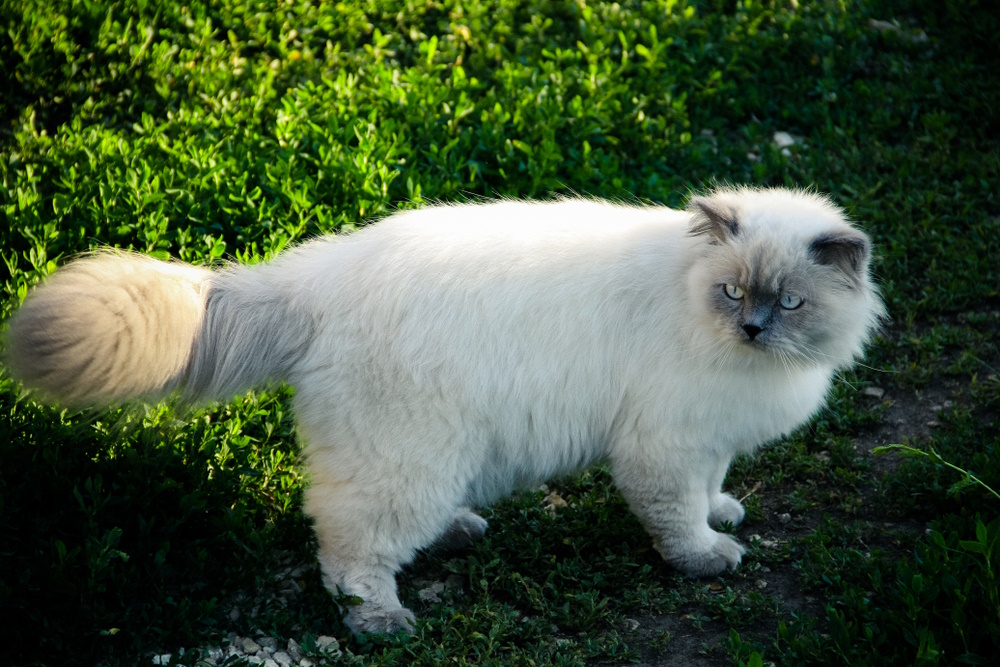
Health
Himalayans have flatter faces like their Persian relatives, and they may inherit respiratory difficulties. Their long coat makes them more prone to hairballs and skin problems than the short-haired Siamese, so you’ll need to groom them regularly.
Their laid-back nature makes them more susceptible to weight gain because they are less active than Siamese Cats. To counteract this, monitor their diet, feed them healthy meals, and limit treats. Himalayan Cats are predisposed to several severe health issues, including polycystic kidney disease, heart disease, hip dysplasia, and diabetes.
Breeding
The mating of a Persian and Siamese will produce a Himalayan cat. Since they’re a cross between the two parent breeds, the Himalayan is not always considered purebred. The cost of a Himalayan kitten can vary depending on the breeder, location, and other factors. However, they typically cost between $600 and $1,200.
Breeders select Persians or Siamese to mix with Himalayans to control how fluffy or sleek the next generation of kittens becomes. The breeding of a Persian and Siamese to create the ideal Himalayan is a process that takes many years of selective breeding to create a cat with the desired characteristics. To maintain the desired qualities, subsequent generations may be bred by mating a Himalayan with a Persian or a Siamese.

Suitable For
Himalayan Cats are known for their friendly personality and love of being around people. If you teach your kids how to treat them gently and calmly, Himalayans make great family pets. They are docile and peaceful animals and love being close to their owners.
They need an adult in charge of their care since they require a lot of grooming. In that aspect, they’re probably better suited to adults who can calm them and hold them gently while they work out the pesky knots and tangles.

Which Breed Is Right For You?
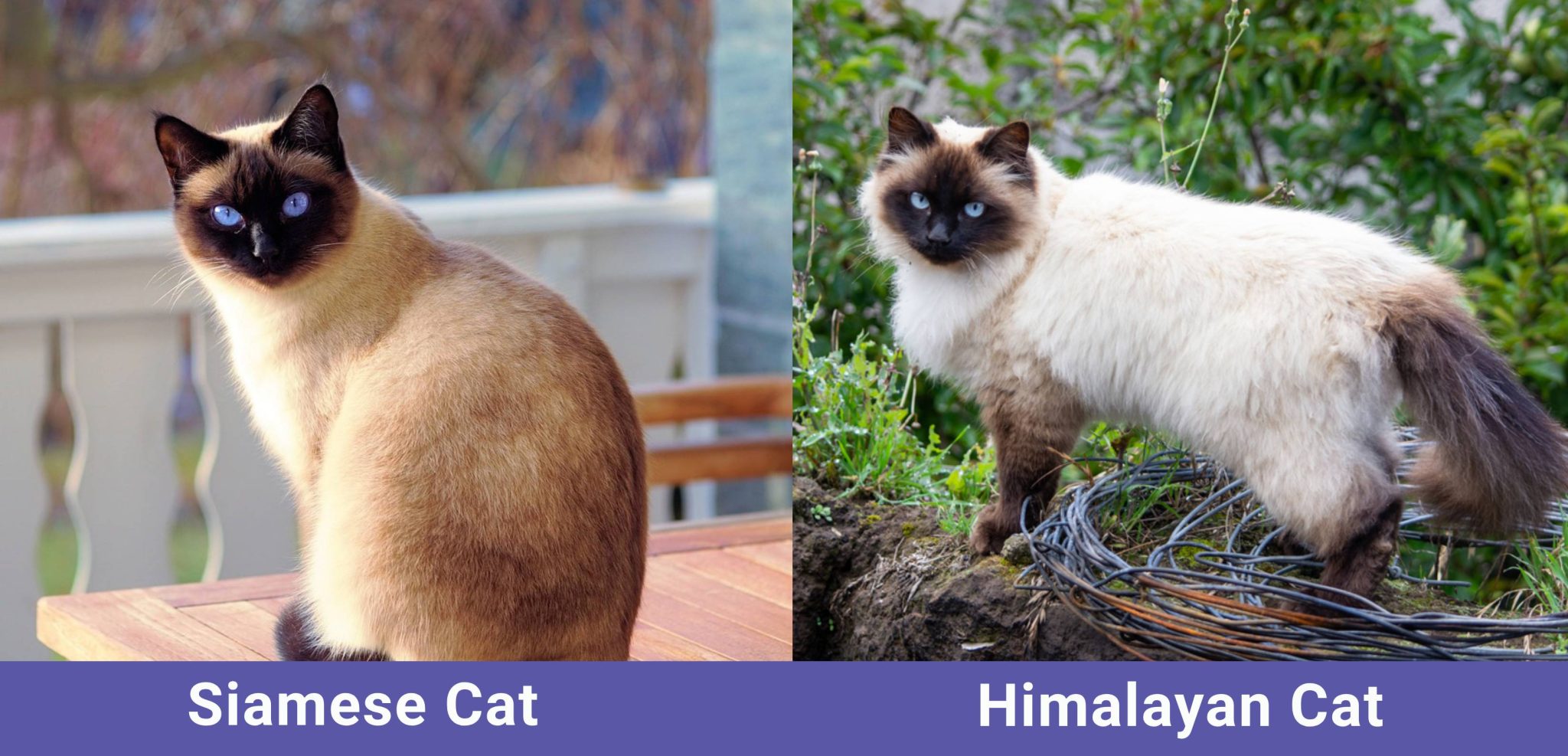
There are several factors to consider when choosing a cat as a pet. Siamese or Himalayan Cats make excellent pets, and both make wonderful additions to any family. Even though the Himalayan was developed from the Siamese, there are some noticeable differences. As well as differences in appearance, there are important character differences to consider, too.
Both cats are friendly family pets. Siamese require much more attention than Himalayans, so if you’re often on the road, get a Himalayan. In addition, Siamese Cats are more playful than Himalayans, and they are better with small children. The Himalayan is more of a snuggler and curls up with their owner for hours.
In the final analysis, some people may prefer a Siamese because of their sleek appearance and talkative nature, while others might prefer a Himalayan because of their long fur and calm personality. Ultimately, the best cat for you depends on your preferences and lifestyle.
See also:
Featured Image Credit: Left Witsawat.S, Shutterstock | Right Anne Richard, Shutterstock
